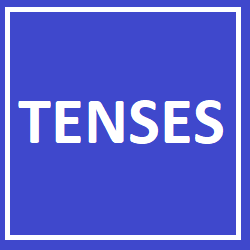Understanding Subject-Verb Agreement
Subject-Verb Agreement forms the backbone of English syntax, dictating that the verb must match its subject in number. This principle ensures clarity and precision in communication, preventing ambiguity in sentences. For TOEFL aspirants, mastering this rule is indispensable, as it directly impacts their ability to construct grammatically correct sentences—a vital skill evaluated in both the writing and speaking sections of the exam.
At its core, Subject-Verb Agreement hinges on understanding the distinction between singular and plural subjects. Singular subjects, such as “he,” “she,” or “it,” require verbs that are also in the singular form, for instance, “runs,” “speaks,” or “is.” Conversely, plural subjects, like “they” or “we,” necessitate plural verbs, such as “run,” “speak,” or “are.” This rule may seem straightforward, but its application can become complex due to English language exceptions and irregularities.
Recognizing the subject of a sentence and determining whether it is singular or plural is the first step toward applying the rule of Subject-Verb Agreement. This skill is crucial for TOEFL students, as it directly influences their grammatical accuracy, ultimately affecting their scores. As we progress, we will explore specific rules and examples to further elucidate this essential grammatical concept.
In the next section, we’ll break down the Key Rules for Subject-Verb Agreement, providing detailed explanations and examples for each.
Key Rules for Subject-Verb Agreement
Understanding and applying the rules of Subject-Verb Agreement can significantly enhance the grammatical accuracy of your sentences. Here are some crucial guidelines TOEFL students should master:
1- Singular Subjects with Singular Verbs:
Singular subjects require verbs in the singular form. This rule is fundamental for ensuring grammatical harmony in sentences. For instance, “The cat (singular subject) runs (singular verb) across the street.”
2- Plural Subjects with Plural Verbs:
Similarly, plural subjects must be accompanied by verbs in the plural form. This agreement is key to maintaining sentence clarity. Example: “The cats (plural subject) run (plural verb) across the street.”
3- Singular Indefinite Pronouns:
Indefinite pronouns such as “anyone,” “everyone,” “someone,” and “nobody” are treated as singular and require singular verbs. This rule often confuses learners due to the seemingly inclusive nature of these pronouns. For example, “Everyone (singular indefinite pronoun) likes (singular verb) ice cream.”
4- Words That Appear Plural But Are Singular:
Certain nouns, such as “mathematics,” “news,” and “measles,” look plural due to their -s ending but are considered singular and take singular verbs. This rule underscores the importance of knowing individual word behaviors. Example: “Mathematics (singular noun) is (singular verb) fascinating.”
5- Collective Nouns’ Variability:
Collective nouns like “team,” “group,” or “jury” can take either singular or plural verbs, depending on whether the action refers to the group acting as a single unit or to individual members acting separately. This distinction is crucial for accurate expression. For instance, “The jury (collective noun) is (singular verb) unanimous in its verdict,” versus “The jury (collective noun) are (plural verb) arguing among themselves.”
6- Compound Subjects Joined by ‘And’:
When two or more subjects are combined with “and,” they generally take a plural verb, indicating collective action or state. Example: “The writer and the director (compound subject) are (plural verb) discussing the script.”
7- Compound Subjects Joined by ‘Or’, ‘Either…Or’, ‘Neither…Nor’:
The verb should agree with the part of the subject closer to the verb. This rule applies to subjects connected by “or,” “either…or,” or “neither…nor,” creating a situation where the verb must align with the nearest subject in terms of number. For example, “Neither the students nor the teacher (closest subject) is (singular verb) ready for the exam.”
Common Mistakes and Exceptions
While the rules of Subject-Verb Agreement form the foundation of grammatical accuracy, common mistakes and exceptions often lead to errors. One frequent error is misidentifying the true subject of a sentence, especially when it is separated from the verb by phrases or clauses. Another is applying plural verbs to collective nouns without considering the context of their usage.
Additionally, irregular verbs present a unique challenge, as their singular and plural forms do not follow the standard pattern. Understanding these exceptions and practicing their correct usage is vital for TOEFL students aiming for grammatical precision in their English.
Strategies for Mastering Subject-Verb Agreement
To master Subject-Verb Agreement, TOEFL students should engage in targeted practice that includes identifying subjects and verbs in reading materials, completing exercises focused on this grammatical rule, and applying the concepts in writing and speaking activities. Regular reading of well-edited texts can also help learners internalize correct usage patterns. Furthermore, discussing tricky sentences with peers or instructors can clarify doubts and reinforce learning.
Conclusion
Mastery of Subject-Verb Agreement is essential for TOEFL success and effective communication in English. By understanding and applying the rules, common mistakes, and exceptions, students can enhance their grammatical accuracy. Regular practice, combined with a strategic approach to learning, will enable TOEFL candidates to achieve proficiency in this fundamental aspect of English grammar, paving the way for higher scores on the exam and improved language skills.
|


